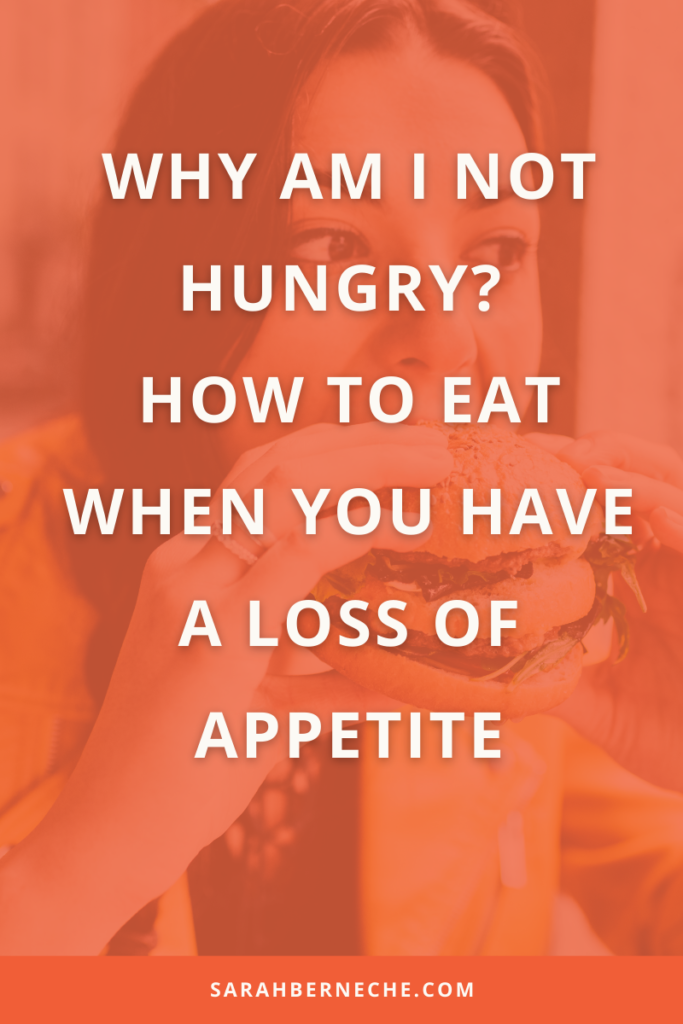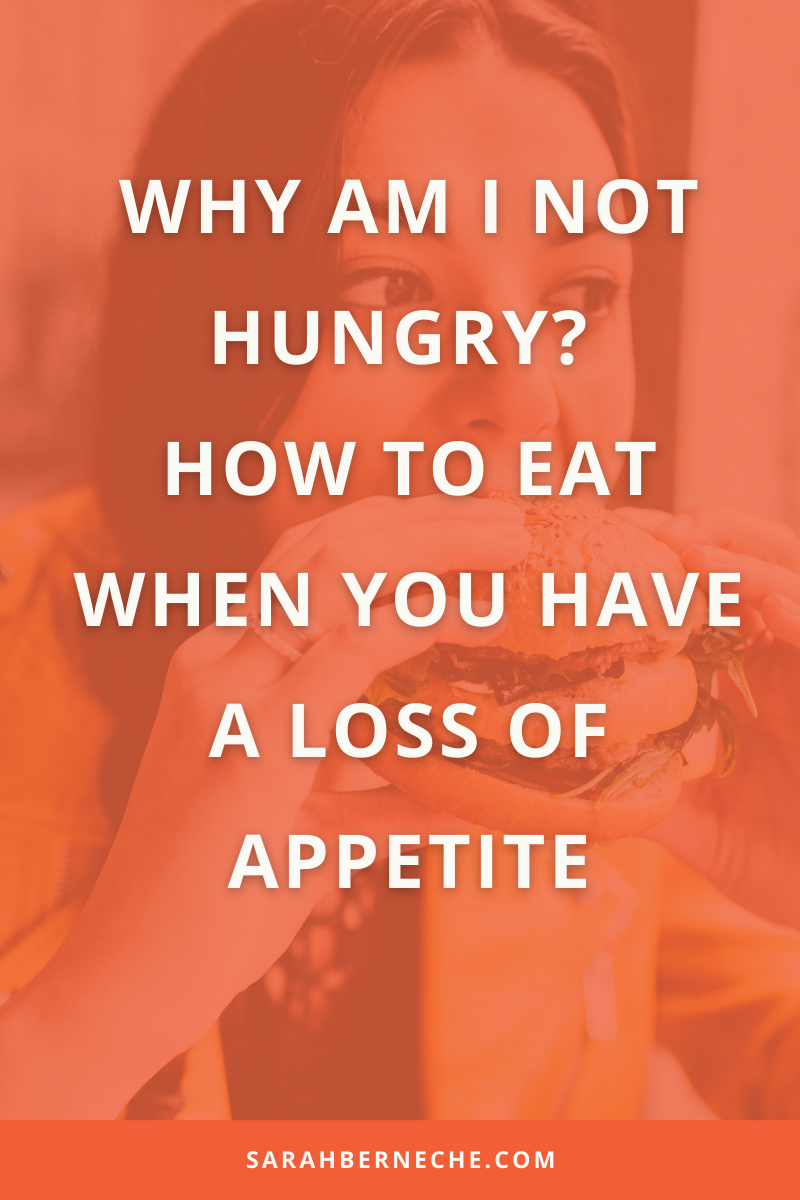Many people I’ve spoken to have asked me, “Why am I not hungry?”
Throughout the last two years, people have reported struggling with a low appetite or disinterest in eating. As we navigate repeated attacks on our autonomic nervous systems via multiple adverse events, sensational headlines, and heart-wrenching stories, it can be challenging to identify and prioritize our hunger and nourishment needs.
In light of what’s going on, eating might not seem so important. It’s fascinating to me that what used to feel so breezy, fun, and entertaining has almost imperceptibly become a chore, another item to knock off on the to-do list.
I want you to know that it’s so common during times of stress—and especially prolonged stress—to feel bored with food or unenthusiastic about eating. Why? For one thing, stress can trigger the production of cortisol, which tends to suppress appetite. Even though we usually do produce cortisol, most of the people I know are experiencing unprecedented stress. Eating isn’t a top priority when our primitive brains believe we’re running from a tiger!
While I imagine this is difficult for most folks, those in recovery can be especially susceptible to these shifts.
It can be tempting to get by on caffeine or to delay eating when you don’t feel hungry. When you’re preoccupied with virtual school, working from home, and attending to various needs, it’s understandable that hunger feels less pressing or that you miss the sensations entirely. You might even be thinking, “Why should I eat if I’m not hungry?”
The truth is, your body still needs energy even if you don’t feel hungry. Our energy needs don’t stop just because our sensations are paused by stress. In fact, stress and anxiety can actually increase nutritional needs. Under-eating can reduce our ability to cope with life’s difficulties and render us more susceptible to illness. This is all the more reason to keep eating and to stick a routine with food.

Today, I’m discussing the following:
- Hunger and how to identify it when you don’t “feel” hungry
- The difference between hunger and appetite
- What to do when you’re hungry…but not hungry
- How to eat when you’re not hungry so that you can take care of yourself even when you’re feeling disconnected from your body.
If your goal is to end binge eating for good or another unrelated objective, consistent and regular eating is essential.
Hunger vs. Appetite
First, let’s differentiate between hunger and appetite, as they’re often lumped together.
Hunger refers to the general discomfort or weakness you feel when you’re low on energy. Satisfying this physical urge is relatively straightforward, at least theoretically. Hunger can be satisfied by eating enough food, ideally a balanced mix of macronutrients.
Despite what you might have been told, not everyone’s experience of hunger is the same. While some people may feel irritable or experience a short fuse when hungry, others may start thinking about food. Low energy, fatigue, and difficulty concentrating are shared experiences. Even though stomach growling is a sign of hunger, it’s actually one of the more advanced symptoms.
Keep in mind that it’s common to need a lot more food than any diet or wellness plan has ever allowed for. You may need more food than you are psychologically comfortable eating to meet your nutritional requirements.
Appetite, on the other hand, refers to the desire or craving for food.
While hunger is all work, appetite asks us to create space for play and creativity.
You can get full-on, relatively bland food. Satisfaction refers to the “hit the spot” feeling you experience.
It’s possible you don’t feel hungry and have a loss of appetite, but many people I’ve spoken to either don’t feel hungry but still want to eat, or feel hungry but don’t want anything to do with food.
If you don’t “feel” hungry, consider whether you’re experiencing any other signs that may indicate otherwise. Do you notice a decline in energy, concentration, or focus? Do you have thoughts of food or specific cravings? Have you found yourself feeling irritable? Expect your hunger cues to be more muted than usual, and try to make time to eat anyway.
Hungry, but Not Hungry
What if you want to eat even when you’re not physically hungry?
First of all, the model I use in my work — Intuitive Eating — is not the “hunger and fullness diet,” as Isabel Foxen Duke has said.
Physical hunger is not a prerequisite for eating, and bodily sensations are not the only signs that you need food.
Secondly, the desire for food or an interest in food is a totally valid hunger cue. While dieting encourages us to suppress our passion for food and to only eat when we “really need it,” whatever that means, eating because you feel like it is a valid and logical response to appetite.
There have certainly been times in my life when I haven’t noticed physical hunger, but certainly felt a drive toward food. If it’s around a time you usually eat, say noon or around 7 pm, the desire for food could very well be an indicator that you’re hungry.
If you’re ever unsure, what about getting curious? Remember that there are no mistakes in eating. You can always try a snack or meal and see how you feel as you go along.
How to Eat When You’re Not Hungry
- Consider supporting your nervous system through somatic work or mind-body movement, such as restorative yoga. Stress often figures prominently, and finding ways to minimize this where possible can only help your eating.
- Simplify meal preparation. Opt for frozen and convenience foods (e.g., canned and frozen), basic sandwiches, and packaged foods to help you outsource where you can. If you’re able to, ordering groceries might be an option here, too!
- Experiment with meal kits and other novel ways of eating. It’s easy to get stuck in a rut, and meal kits can be a great way to get you out of the same old, same old.
- Aim to eat every 3-4 hours. Even if you don’t feel hungry, sticking to a regular schedule can ensure your needs get met and your blood sugar remains stable.
- Lean on comfort foods. It’s okay if all you want to eat right now is pasta! Eating is always better than not eating. If soups and stews are unappetizing, can you be okay with quesadillas or chicken salad sandwiches? Take some of the pressure off to be “perfect” with food.
- Consider liquids. Smoothies, broths, soups, and supplements like Kate Farms can all be helpful if you don’t feel up to eating.
- Change up the structure. A meal doesn’t have to be three components. Hold a picnic in your living room by the fireplace, make a meal out of snacks or appetizers, or include theme nights like baked potato night or taco night with a variety of toppings.
Want out of the diet cycle for good? Here’s how we can work together:
- Work with me 1:1. Together we’ll review your current relationship with food and your body, discuss your goals for our time together, and help you to feel safe with food and your body without #dietmath.
- New to Intuitive Eating and a non-diet approach? My book, Enjoy It All: Improve Your Health and Happiness with Intuitive Eating, offers a guide to finding lasting peace with food.

Comments +